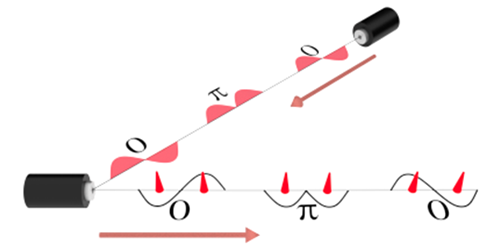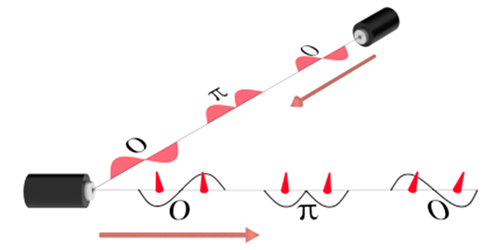Controlling a Laser’s Phase
Varying the phase of an electromagnetic wave in a controlled way—phase modulation—is an important method for encoding information onto a light beam. But existing phase modulators are bulky add-ons that can’t be integrated into a chip because they require very high driving voltages. A team led by Zhiliang Yuan and Andrew Shields at Toshiba Research Europe Limited, UK, has now demonstrated a compact semiconductor-laser system that can be directly phase modulated, removing the need for an external modulation device.
Direct-modulation schemes have been available for decades. They are primarily used to control the intensity of a laser by varying its driving voltage or current. Phase modulation by such methods is also possible, but the simultaneous perturbations in beam intensity and frequency make them unsuitable for applications that require a purely phase-modulated beam, from high-speed coherent optical communications to quantum cryptography.
The authors’ device can impart a phase modulation without affecting other beam parameters. Their idea is to assign the tasks of phase modulation and pulse generation to two separate lasers. The first laser, responsible for phase modulation, emits long pulses whose phase is controlled via the laser driving current. This laser beam is injected into the second laser, which is responsible for generating a train of shorter (70 picosecond) pulses. This coherent injection scheme allows the first laser to transfer the phase of its optical signals onto that of the pulses emitted by the second laser. The researchers’ experiments show that the device can modulate the phase of the output pulses between 0 and 2 without affecting pulse amplitude. They also apply the device in a quantum communication setup, demostrating that it generates pulses of sufficient quality for quantum key distribution.
This research is published in Physical Review X.
–Matteo Rini
Matteo Rini is the Deputy Editor of Physics.





